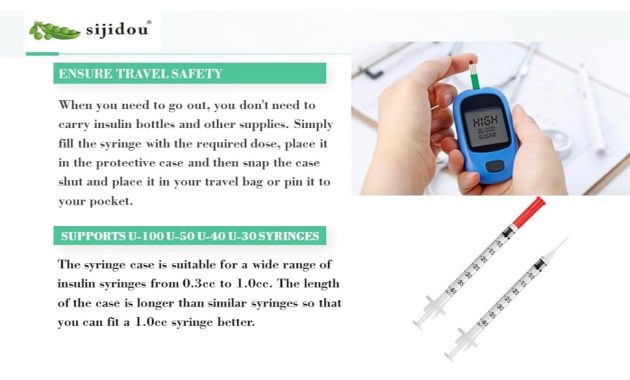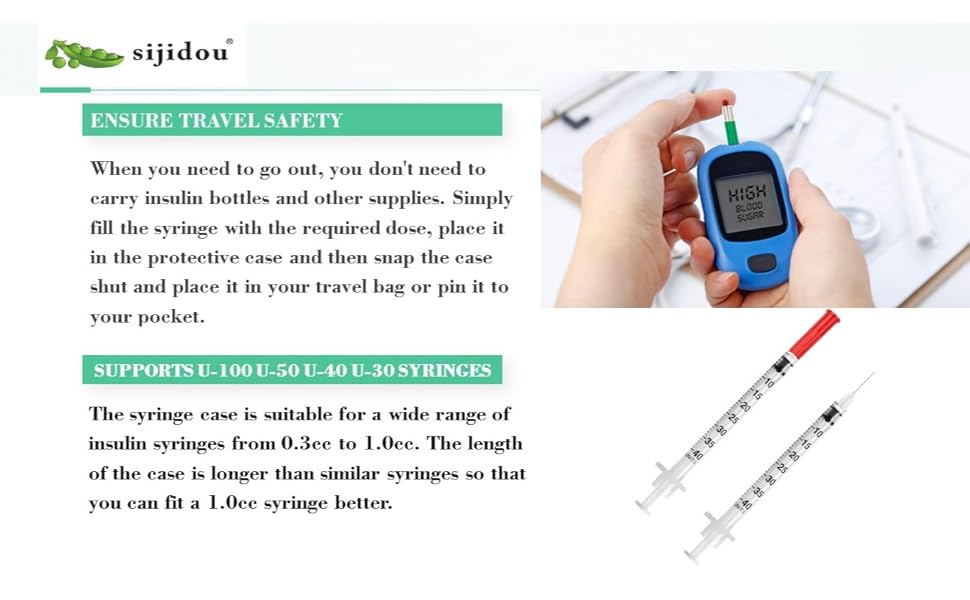
Diabet Travel-Proof Plan for Safer Journeys: Navigating the World with Diabetes
The allure of travel, the thrill of exploration, and the joy of experiencing new cultures are universal desires. However, for individuals living with diabetes, the prospect of embarking on a journey can present unique challenges. Managing blood sugar levels, ensuring access to medication and supplies, and adapting to unfamiliar environments require careful planning and preparation. This article provides a comprehensive Diabet Travel-Proof Plan for Safer Journeys, designed to empower individuals with diabetes to travel confidently and safely, minimizing risks and maximizing enjoyment.
This plan isn’t just about packing insulin and snacks. It’s about a holistic approach, encompassing pre-trip preparation, in-transit management, and on-location strategies. Following this Diabet Travel-Proof Plan for Safer Journeys will ensure your travel experience is as smooth and enjoyable as possible.
Pre-Trip Preparations: Laying the Groundwork for Success
Before booking any flights or hotels, the most crucial step is consulting with your healthcare team. This includes your endocrinologist, primary care physician, and any other specialists involved in your diabetes care. They can provide personalized advice based on your individual needs and the specific destination you plan to visit. Discuss your travel itinerary, planned activities, and any potential health concerns. This step is essential for a safe and enjoyable trip.
Medical Clearance and Documentation
Obtain a medical clearance from your doctor, confirming your ability to travel and providing essential information about your diabetes management. This document should include your diagnosis, medications, dosages, insulin regimens, and any other relevant medical details. Carry this documentation with you at all times, along with a copy of your prescription for all medications. Keep it in your carry-on luggage and easily accessible. This will be useful in case of emergencies or if you need to refill your prescriptions.
Medication and Supply Checklist
Create a detailed checklist of all the medications, supplies, and equipment you will need for your trip. This should include insulin, syringes or insulin pens, glucose meters, test strips, lancets, ketone test strips, glucagon emergency kit, snacks to treat low blood sugar, and any other necessary items. Pack extra supplies to account for unforeseen circumstances, such as lost luggage or unexpected delays. Consider packing double the amount of medication you anticipate needing.
Insurance and Emergency Contacts
Ensure you have adequate travel insurance that covers pre-existing medical conditions, including diabetes. Review the policy carefully to understand the coverage limitations and exclusions. Obtain a list of emergency contacts, including your doctor, local hospitals, and the emergency services of your destination. Share this information with your travel companions and keep it readily accessible. Having this information at your fingertips provides peace of mind.
Destination Research and Planning
Research your destination thoroughly. Learn about the local healthcare system, pharmacies, and the availability of diabetes-related supplies. Identify the location of hospitals and clinics near your accommodation. Familiarize yourself with the local language or download a translation app to assist with communication. Consider the climate and how it might affect your insulin storage and blood sugar levels. High temperatures can damage insulin, and extreme changes in altitude can affect blood sugar.
In-Transit Management: Staying Safe During Travel
Once your Diabet Travel-Proof Plan for Safer Journeys is in place, the next phase involves managing your diabetes during travel. This requires vigilance and proactive measures to maintain stable blood sugar levels and address any potential issues.
Packing and Storage
Always carry your diabetes medications and supplies in your carry-on luggage. This ensures you have immediate access to them, regardless of any baggage delays or losses. Store insulin properly, as directed by your healthcare provider. If refrigeration is required, use a travel cooler or ask your hotel for assistance. Avoid exposing insulin to extreme temperatures or direct sunlight. Proper storage is crucial for the effectiveness of your insulin.
Meal Planning and Timing
Plan your meals and snacks to align with your usual insulin regimen. Pack healthy snacks, such as fruits, nuts, or whole-grain crackers, to treat low blood sugar. Be mindful of mealtimes and insulin administration, especially when crossing time zones. Consult with your healthcare team about adjusting your insulin doses to accommodate changes in your schedule. Consistent meal planning is key to blood sugar management during travel.
Hydration and Physical Activity
Stay hydrated by drinking plenty of water throughout your journey, particularly during flights or long periods of travel. Dehydration can affect blood sugar levels. Engage in moderate physical activity to maintain blood sugar control. Take regular breaks to walk around during long flights or car rides. Consider incorporating exercise into your daily routine at your destination. Physical activity helps regulate blood sugar levels.
Recognizing and Addressing Low Blood Sugar
Be prepared to recognize and treat low blood sugar (hypoglycemia). Carry fast-acting carbohydrates, such as glucose tablets, juice, or hard candies, to raise your blood sugar levels quickly. Inform your travel companions about the signs and symptoms of hypoglycemia, and how to assist you if needed. Always be aware of the symptoms of low blood sugar. Quick action is critical in treating hypoglycemia.
On-Location Strategies: Adapting to Your Destination
Upon arrival at your destination, your Diabet Travel-Proof Plan for Safer Journeys requires flexibility and adaptation. This involves adjusting to the local environment, monitoring your blood sugar levels, and taking necessary precautions to ensure your safety and well-being.
Blood Sugar Monitoring and Adjustment
Monitor your blood sugar levels more frequently than usual, especially in the initial days of your trip. This will help you identify any patterns or trends and adjust your insulin doses accordingly. Be prepared to adjust your insulin doses based on your activity levels, meal intake, and the local climate. Keep a log of your blood sugar readings, food intake, and insulin doses to track your progress. Regular monitoring helps maintain blood sugar control.
Dietary Considerations and Local Cuisine
Be mindful of your dietary choices and the impact they have on your blood sugar levels. Research local cuisine and identify healthy food options. Be aware of portion sizes and carbohydrate content. If you are dining out, ask about ingredients and cooking methods. Consider bringing snacks or pre-portioned meals for times when healthy options are limited. Planning your meals will help with blood sugar control.
Environmental Factors and Insulin Storage
Be aware of environmental factors that can affect your insulin and blood sugar levels. Protect your insulin from extreme temperatures and direct sunlight. Monitor your blood sugar levels more frequently in hot or humid climates. If you are traveling to a high-altitude location, be aware that your insulin needs may change. Always store your insulin correctly to maintain its effectiveness.
Emergency Preparedness
Know the location of the nearest hospitals and clinics. Carry your medical identification card or bracelet, clearly stating that you have diabetes. Inform your travel companions about your condition and how to help you in case of an emergency. Have a plan in place for dealing with unexpected medical issues. Being prepared for emergencies is essential.
Troubleshooting Common Travel Challenges for Diabetics
Even with meticulous planning, unexpected challenges can arise. Here’s how to troubleshoot common travel issues encountered by people with diabetes:
Dealing with Time Zone Changes
Crossing time zones can disrupt your insulin schedule. Consult your healthcare provider about adjusting your insulin doses and meal times. Consider using a continuous glucose monitor (CGM) to track your blood sugar levels more closely. Plan ahead to make these adjustments as smooth as possible.
Managing Insulin Pump Issues
If you use an insulin pump, carry backup supplies, including syringes and insulin pens, in case of pump failure. Know how to troubleshoot common pump problems. Contact your pump manufacturer for assistance if needed. Be prepared for any pump related issues.
Addressing Motion Sickness
Motion sickness can affect your blood sugar levels. Take precautions to prevent motion sickness, such as taking medication or sitting in the front of the vehicle. Keep snacks handy to treat low blood sugar. Being proactive is important.
Handling Food Poisoning
Food poisoning can lead to vomiting and diarrhea, which can disrupt your blood sugar control. Drink plenty of fluids to stay hydrated. Consult a doctor if you experience severe symptoms. Be aware of the risks of food poisoning.
Embracing the Adventure: Living a Full Life with Diabetes
Traveling with diabetes requires diligent planning and management. However, it should not be a barrier to experiencing the world. By following this Diabet Travel-Proof Plan for Safer Journeys, you can minimize risks, manage your blood sugar levels, and enjoy your travels. With proper preparation and a proactive approach, you can explore new places, create lasting memories, and live life to the fullest, all while managing your diabetes effectively. Remember to always prioritize your health and safety. Travel with confidence, knowing that you are prepared for any challenges that may arise. A well-executed Diabet Travel-Proof Plan for Safer Journeys means you can focus on making memories.
This detailed Diabet Travel-Proof Plan for Safer Journeys is designed to provide a framework for safe and enjoyable travel. Remember, every individual with diabetes is unique. Consult with your healthcare team for personalized advice and recommendations. Adapt the plan to suit your specific needs and preferences. By taking the necessary precautions and being proactive, you can explore the world with confidence and live a full and vibrant life.
The key takeaway is that with careful planning and preparation, individuals with diabetes can travel safely and enjoyably. This Diabet Travel-Proof Plan for Safer Journeys provides a comprehensive guide to help you navigate the complexities of travel while managing your diabetes effectively. Embrace the adventure, explore new horizons, and create unforgettable memories.
This Diabet Travel-Proof Plan for Safer Journeys is your guide to a safe and memorable trip. Make sure you have all the necessary documentation and supplies before you leave. Travel is a wonderful experience.
Always consult with your healthcare provider before making any major changes to your diabetes management plan. Safe travels!
[See also: Related Article Titles]

